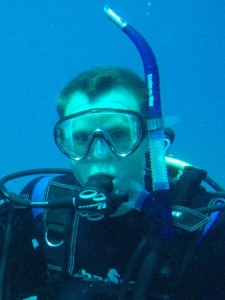 Professor Olsen earned his S.B. in Course 10 (Chemical Engineering) from MIT in June 2003. His undergraduate research with Prof. Karen Gleason focused on understanding the polymerization kinetics of initiated chemical vapor deposition reactions to produce fluorocarbon and organosiloxane polymer coatings for biopassivation and hydrophobic surfaces. He also performed research in analytical food chemistry at General Mills, pressure sensitive adhesives for waterproofing membranes at W.R. Grace, and reactive extrusion and green process development for polymer foam insulation at Dow. He was recognized with the Alpha Chi Sigma award and a Goldwater Scholarship for his undergraduate achievements.
Professor Olsen earned his S.B. in Course 10 (Chemical Engineering) from MIT in June 2003. His undergraduate research with Prof. Karen Gleason focused on understanding the polymerization kinetics of initiated chemical vapor deposition reactions to produce fluorocarbon and organosiloxane polymer coatings for biopassivation and hydrophobic surfaces. He also performed research in analytical food chemistry at General Mills, pressure sensitive adhesives for waterproofing membranes at W.R. Grace, and reactive extrusion and green process development for polymer foam insulation at Dow. He was recognized with the Alpha Chi Sigma award and a Goldwater Scholarship for his undergraduate achievements.
Prof. Olsen moved to Berkeley for his graduate work, where he earned a Ph.D. in Chemical Engineering in December 2007. He was a Hertz Fellow, a Tau Beta Pi Fellow, and the first student of Prof. Rachel Segalman. His research developed the first universal phase diagram for rod-coil block copolymers, an emerging category of polymers with importance for producing self-assembled nanomateirals in biotechnology and organic electronics. In addition, he addressed several issues in rod crystallization within nanostructures, thin film self-assembly of rod-coil systems, and surface reconstruction in polymer films. His research was recognized as a Padden award finalist at the American Physical Society March meeting in 2008.
After finishing his Ph.D., Prof. Olsen was an NIH and Beckman Insitute Postdoctoral Fellow with Profs. David Tirrell, Julia Kornfield, and Zhen-Gang Wang at Caltech. He applied protein biosynthesis to the design of physically associating telechelic protein hydrogels which were applied as injectable biomaterials. Joint theoretical and experimental investigations were used to gain insight into the properties and design rules governing these systems.
Olsen’s interest in polymer science has been longstanding, starting with a high school science fair project on conductive dendrimer films. His current research interests are broadly clustered in the areas of soft condensed matter physics and macromolecular physics, including liquid crystals, biomaterials, colloids, and polymers. He is particularly interested in how biosynthesis can be used as a natural green chemistry for the preparation of designer polymeric materials, how controlled polymerization through biology can give us unique materials that provide insight into polymer physics, and the unique physics of self-assembly in complex protein nanostructures for biotechnology and energy applications. When Prof. Olsen is not doing science, he enjoys underwater photography, hiking, and travel.